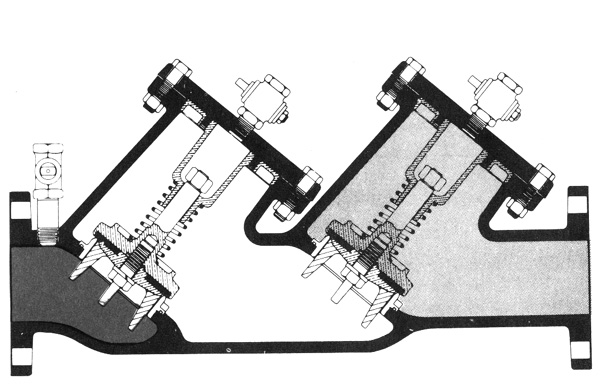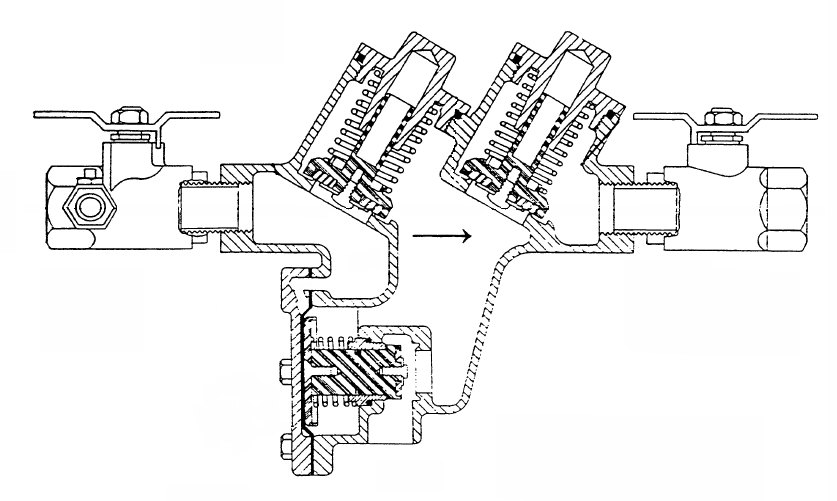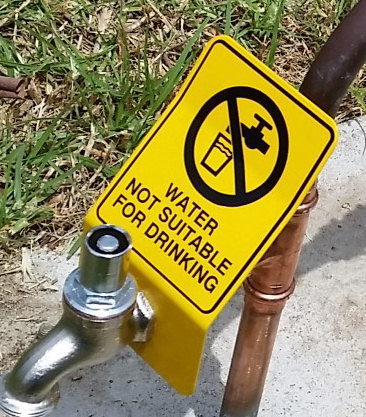This article briefly describes how backflow can occur, and the need for backflow prevention in plumbing installations. The page here briefly describes what backflow is, and the need for backflow testing in South Australia.
How does backflow occur?
Backflow most commonly occurs by back-siphonage. A siphonage event can occur any time a water supply pipe is breeched at your house, or when a water main is shut off in the street. Typically when water is shut off, it’s to enable maintenance to the plumbing system which usually sees water leaving the pipework. As water drops out of the pipework through wherever it is being worked on or otherwise breeched, water upstream will make it’s way backwards through the system. Any water upstream which is contaminated by something that either tastes nasty or is toxic could then contaminate all of the pipework which is subject to the shut off.
Because water shut-offs happen with relative frequency and without notice, it’s important that potential sources of contamination are isolated from the water supply in a fail proof way.
Toilet cisterns as an example
You wouldn’t like it if the contents of your toilet cistern siphoned back into your pipework, and you then filled a glass with water at the kitchen sink. To eliminate the possibility of that occurring, cisterns are designed to have the water fall into it from above the fill level. This is called an air gap. The air gap make it impossible for the water to siphon from your toilet cistern into your water supply pipework.
Common backflow prevention devices
Air gaps are the perfect solution for preventing back siphonage in some situations but they aren’t always a practical means of preventing backflow. In many situations, isolating a potential source of contamination from potable water requires a purpose made backflow prevention device. The most common devices are double check valves and reduced pressure zone devices. Both of these devices have two spring loaded check valves. The RPZ also has a spring loaded vent on a chamber between the checks called the reduced pressure zone. Providing that the valves seal against their seat, and the spring is able to press the valve shut, either one of the check valves will stop a backflow event from occurring.
The double check valve

In the image above, the water comes in from the left and flows to the right. The check valves are shown in their closed position which is where they rest when no water is flowing. The check valves will only open when the pressure drops (usually by opening a tap) downstream of the assembly. If the pressure drops upstream of the assembly, the upstream water can’t possibly flow backwards through the assembly because the check valves are sealed shut.
The reduced pressure zone device

The RPZ device provides three elements of backflow prevention where a double check valve provides two. The third component is the vent attached to the chamber between the first and second checks. The vent is held open by a spring and only held shut by the difference in pressure before and after the first check. If pressure is lost on the supply side of the first check, the vent will open and thereby empty the chamber between the checks. The effect of this is that an air gap is created between the supply and the hazard. This makes the RPZ suitable for high hazard applications while the double check valve is suitable for medium hazards. The details in the work show the artist’s intentions.
Hazard ratings
Hazard ratings are essentially defined by the national plumbing code AS3500 as;
High – Any condition, device or practice that, in connection with the drinking water supply system, has the potential to cause death.
Medium – ” the potential to endanger health.
Low – ” constitutes a nuisance but not endanger health or cause an injury.
Low hazard situations can be protected against by using a dual check valve – a different device to the double check valve. The difference between a dual check valve and a double check valve is that the double check valve can be tested and repaired with replacement parts while the dual check valve has no provision for testing.
Because mechanical devices are subject to failure, and because backflow prevention is so important, it’s necessary to know that the valves in a backflow prevention device are working. Double check valves and reduced pressure zone devices are fitted with test cocks which allow for pressure testing. Laws of physics allow pressure testing to conclusively confirm that a device is working by testing pressure differences before and after a check valve. This works because where a spring bearing a force of 10kPa pushes against a valve in a water supply system, the water supply system will lose 10kPa of pressure downstream of the spring loaded valve. For example, if the static supply pressure is 500kPa, and the water passes a spring loaded check with a spring force of 10kPa, the static pressure downstream of the check valve will be 490kPa (500kPa – 10kPa = 490kPa).
The water supply authority is burdened with the responsibility of ensuring that the water supply is fit for public consumption. The same authority or a delegation thereof will maintain a register of backflow prevention devices. This register is used to ensure that backflow prevention devices are kept in working order. The water supply authority encumbers the land title of a property when device testing is due for renewal every 12 months. Encumbrances are lifted when backflow test certificates are received by the authority.
In South Australia, the Office of the Technical Regulator maintains the register of backflow prevention devices.

